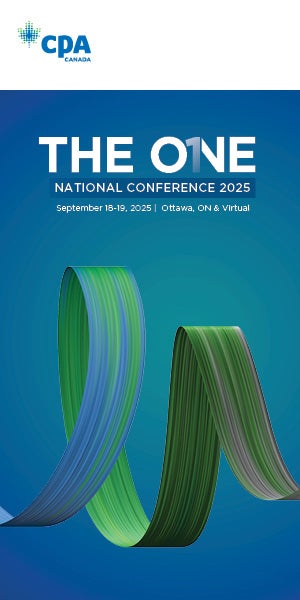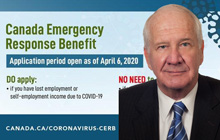Tooth or Consequences: The Perils of Online Tax Filing

Allan Lanthier explains a recent case in the UK Supreme Court, HMRC v Tooth, and its consequences in a Canadian context
 |
Allan Lanthier is a retired partner of an international accounting firm and has been an advisor to both the Department of Finance and the Canada Revenue Agency. |
MONTREAL – In a decision released last month,[1] the UK Supreme Court decided that an online tax return filed on behalf of the taxpayer Mr. Tooth did not contain a “deliberate inaccuracy,” even though the return would be read, at least initially, by a computer rather than a human being.
The court stated that “A document written in the English language (or any language other than computer language) does not have a different meaning depending on whether it is read by a human being or by a computer.”[2] The court concluded that the year was no longer open to assessment, and that Mr. Tooth did not have to repay tax savings of £475,000 resulting from his participation in a tax avoidance scheme.
The tax avoidance scheme
The scheme used by Mr. Tooth — the “Romangate” scheme — was a tax shelter that had been widely marketed to more than 500 UK individuals, including television stars, athletes and socialites, as well as doctors, dentists and lawyers, supported by an opinion from leading tax counsel. Mr. Tooth participated, and claimed a significant employment loss for the tax year ended April 5, 2008,[3] resulting in tax savings of £475,000.
Whether the scheme was effective or not was a matter of some controversy — controversy that ended in 2013 with the assistance of retrospective legislation. By that time, Mr. Tooth’s return was only open to assessment if it contained a deliberate inaccuracy: if it did, HMRC could issue an assessment up to 20 years after the end of the tax year. HMRC issued an assessment in 2014, relying on the 20-year limitation.[4]
The online tax filing
The tax return for Mr. Tooth was filed online, using the government’s software. The software had a technical glitch: it was not possible to enter a loss from employment. The taxpayer’s advisor contacted the government, and was told to enter the loss in some other box, and provide a written explanation in the “white space” included for such purpose in the online form.
The advisor entered the loss (a loss of more than £1.1 million) as a partnership loss, and used the white space to provide an explanation that could hardly have been more explicit. The explanation stated that the loss was an employment loss, and added the following: “I acknowledge that my interpretation of the tax law applicable to the above transactions … may be at variance with that of HM Revenue and Customs … I assume you will open an enquiry.”
In August 2009, HMRC wrote Mr. Tooth stating that they were indeed opening an enquiry: however, the government’s attempt to amend the return and deny the loss was flawed and did not protect its position. And there the matter sat for more than five years, until October 2014 when an assessment was issued. But an assessment at this late date would only be valid if there had been “a deliberate inaccuracy in a document” given to the HMRC.
Was there a deliberate inaccuracy?
Canadian readers will be perplexed that the issue of deliberate inaccuracy was even raised. After all, the taxpayer had made full disclosure in the white space that formed part of the online return.
The government hung its hat on the fact that the return would be read, at least initially, by a computer, rather than (in the words of the court) “…by a sentient, literate, human being.” Its position was that a deliberate inaccuracy in a document could mean any part of a document — in this case the partnership pages. Surprisingly, the UK Court of Appeal, in a two-to-one decision, agreed.
The Supreme Court would have none of it. It stated that the fact that the government’s electronic form was defective was not the fault or concern of the taxpayer and, in any event, that the return must be read as a whole, not with the tunnel-vision that the government suggested.
Online filing in Canada
Online filing is a different beast in Canada of course, with no “white spaces” to give any disclosure at all. Whether this is a good or bad thing will depend on the circumstances.
For example, assume that Ms. A — a high rate taxpayer — owns the shares of a Canadian-controlled private corporation[5] (CCPC) with a value of $1 million, and intends to purchase a villa in France at a cost of $500,000. Her husband, Mr. A, borrows $500,000 from a bank, and purchases 50 percent of the CCPC shares from her for cash (Ms. A uses the cash to purchase the pied-à-terre in France). There is no gain or loss to Ms. A on the sale of the shares[6] and, if CCPC is not paying dividends, Mr. A’s annual loss from property (interest paid to the bank) is attributed to Ms. A and deducted by her as interest expense.[7]
Ms. A is aware of the decision of the Canadian Supreme Court in Lipson,[8] but believes that the facts here are different. Still, with a paper return, Ms. A might have added an obscure reference (in the smallest possible font) to subsection 74.1(1) when filing. With an online form, there is no opportunity to do so.
Without disclosure, it is less likely that Ms. A’s filing position will be challenged. On the other hand, there is a greater risk that the tax authorities could allege misrepresentation for purposes of the extended reassessment period.[9] In different and more extreme cases, the government may also be better placed in seeking to apply penalties for false statements or omissions in a return or form.[10] And while a Canadian taxpayer can always mail an explanation to the tax authorities, this may invite more scrutiny than desired.
Footnotes
[1] Commissioners for Her Majesty’s Revenue and Customs v. Tooth ([2021] UKSC 17).
[2] Ibid, at paragraph 50.
[3] The curious UK year end date of April 5 has its origins in 1582, when Pope Gregory ordered the Julian calendar — named after Julius Caesar — to be replaced by the Gregorian calendar.
[4] In addition to “deliberate inaccuracy,” a second issue was whether, in 2014, HMRC could find out (discover) that tax was owing and issue a valid assessment, when a different HMRC employee had already made the “discovery” during 2009. The Supreme Court stated that, had the outcome of the appeal depended solely on the discovery issue, it “would have been disposed to allow it.” This second issue is not relevant under Canadian tax law.
[5] As that term is defined in the Canadian federal Income Tax Act, referred to herein as “the Act.”
[6] Subsection 73(1) of the Act.
[7] Subsection 74.1(1) of the Act.
[8] 2009 SCC 1.
[9] Subparagraph 152(4)(a)(i) of the Act.
[10] Subsection 163(2) of the Act.
Allan Lanthier is a retired partner of an international accounting firm and has been an advisor to both the Department of Finance and the Canada Revenue Agency. Top image by rawpixel.com.










(0) Comments